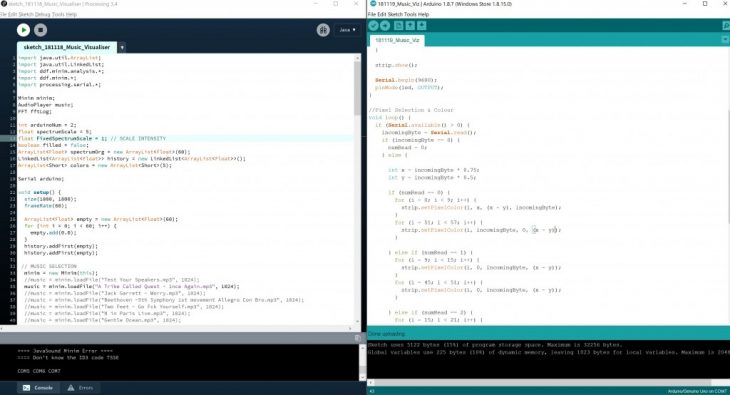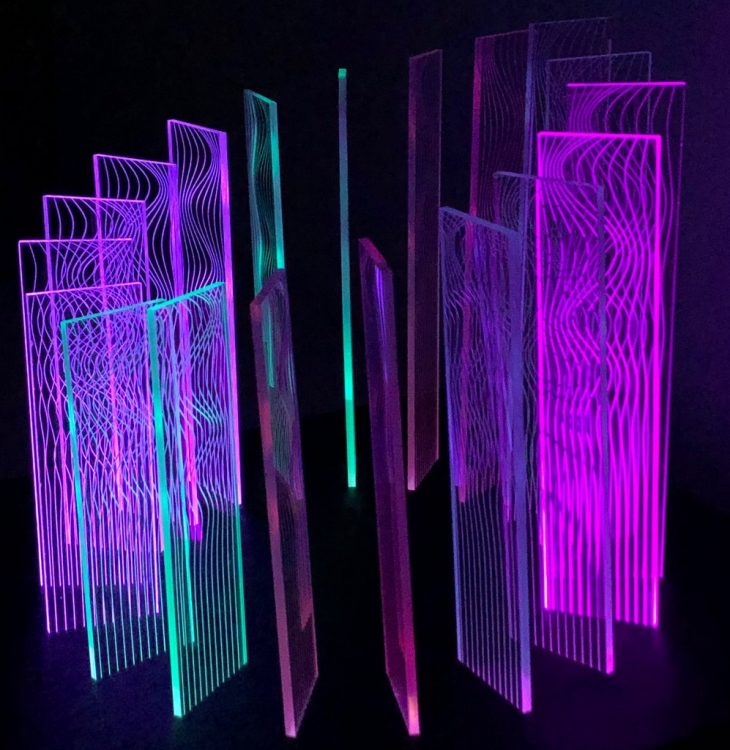
There’s something about sound that has captured humanity’s attention. It’s one of the five kinds of input we receive to be able to interact with one another and world around us. The “ubiquitous acoustic sphere simultaneously being produced by social action and surrounding that social action” has been largely ignored by qualitative researchers. Whether listening in the moment or reviewing an audio file, we must find ways to differentiate between a sigh, a wail, a thrum, or a rustle.

DIVERSE APPLICATIONS
Recorded tracks can be used mark out specific events of historical importance (speeches, events, concerts), sounds associated with cities (traffic, construction, crowd), to document changing patterns of nature (growth of flora & movement patterns of fauna). It can be used for surveillance & security purposes, to make disabled or elderly persons (affected in their hearing capabilities) aware about environmental sounds.
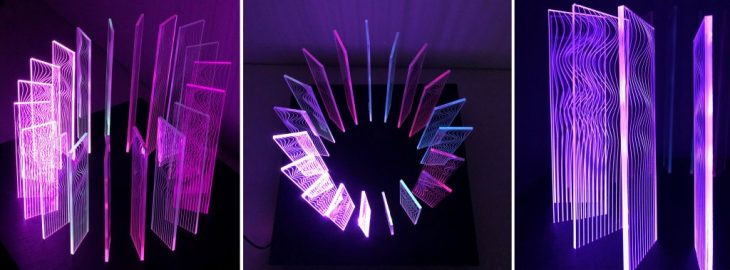
CONSTRUCTION
A linear strip of Neopixel LED is cut into 19 strips comprising of 3 Leds each are soldered together to give circular shape. Laser cut plywood is pasted at base of wooden box to keep Leds in place. Arcylic spacers are used to maintain a continuous distance between laser cut sheet & for keeping acrylic strips upright. After fixing the lights in place; hollow box is capped with another laser cut square with slots to slide in acrylic.
Axonometric
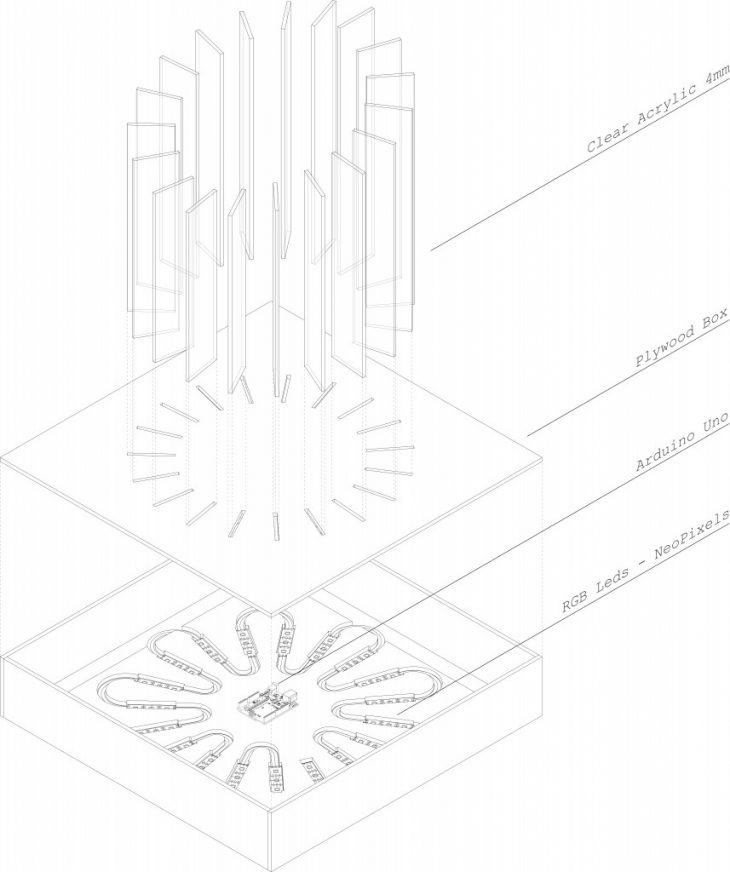
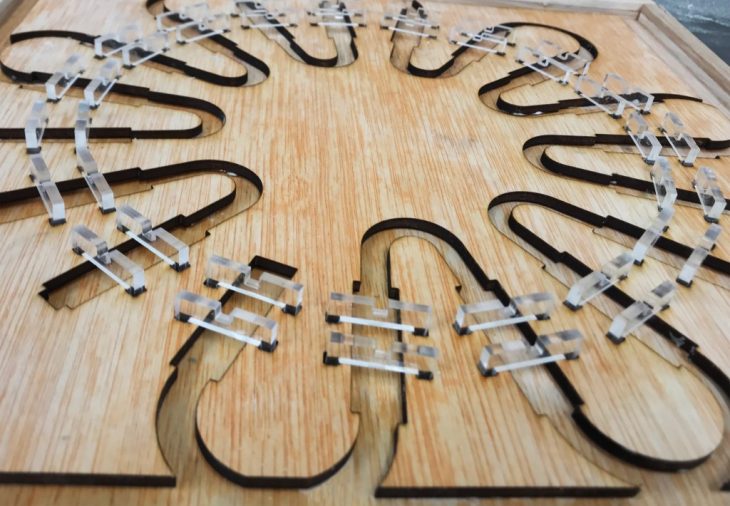
ARDUINO CODE
The process involves analysing data behind noise namely the sound spectrum(spectra) and its attributes : frequency, power. Spectrum is mapped using processing code & particular attributes are converted into legible properties of sound : Bass, Treble, Balance & Loudness and presented over an array of engraved acrylic strips.
